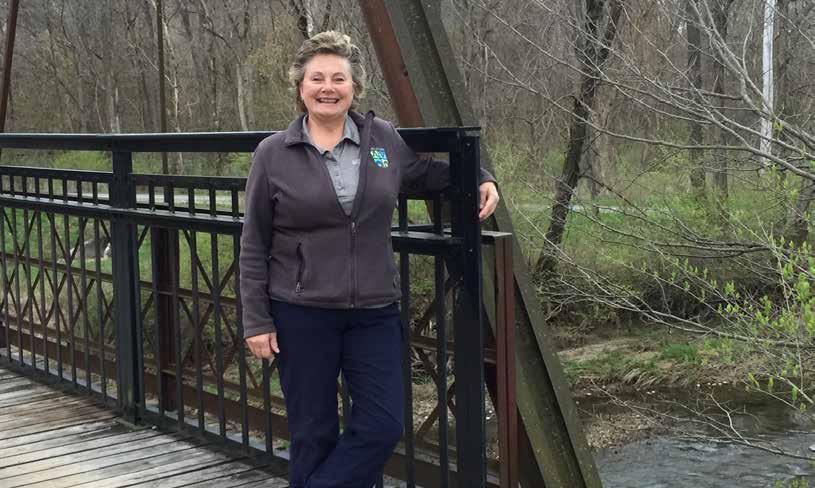
1 minute read
A Local Trailblazer: Meet Kim Freeman, the Woman Behind the Creation of Washington Township Park
Writer / Christy Heitger-Ewing Photography Provided
A 50-plus year resident of Avon, Kim Freeman first moved to Hendricks County when she was eight years old. A 1976 alumni of Avon High School, Freeman joined the Indiana National Guard in 1978 and served until she got pregnant.
A self-described tomboy, Freeman loved being outside and working with people, which is why she dreamed of a career as a forest ranger. While that dream was percolating, back in 1985, Governor Robert Orr announced plans for a yearlong celebration of everything Indiana called “Hoosier Celebration 88.” The idea was to bring together communities to host a giant celebration that promoted tourism and celebrated Hoosier heritage. “Each community was challenged to pick a project and set up a committee, and we decided we wanted Avon to have a park,” Freeman says. The Avon Township Trustees office was also looking at establishing a park so Freeman began attending their meetings and Trustee Greg Hurst put her to work.
“I was their unpaid secretary for three years as we worked to incorporate Avon and establish the West Central Conservancy District as a municipality,” says Freeman, who was appointed as park chairman because she, as she says, was the “outdoorsy person.”
Though all of the board members had their feelers out looking for available land, it was Freeman who ultimately stumbled upon it when she was chatting with a grocery store coworker, Layla Kepple, whose husband Keith owned property that he was looking to sell.
“My friend said, ‘Kim, we always thought it would be neat to turn that property into a park,’” Freeman recalls.
The 74 acres of land, which had previously been a hog farm, was ideal for a community park so Freeman obtained a grant to purchase the land in 1989. Soon thereafter, the trustees also bought an additional nine acres on the other side of the creek, just south of the softball diamond.
“An interesting tidbit of history is that there was a house on that property that burned down. During prohibition days, it was a speakeasy for John Dillinger,” says Freeman, who notes that the road that passes over the old iron truffle bridge on the property and is now a walking trail was at the time called




